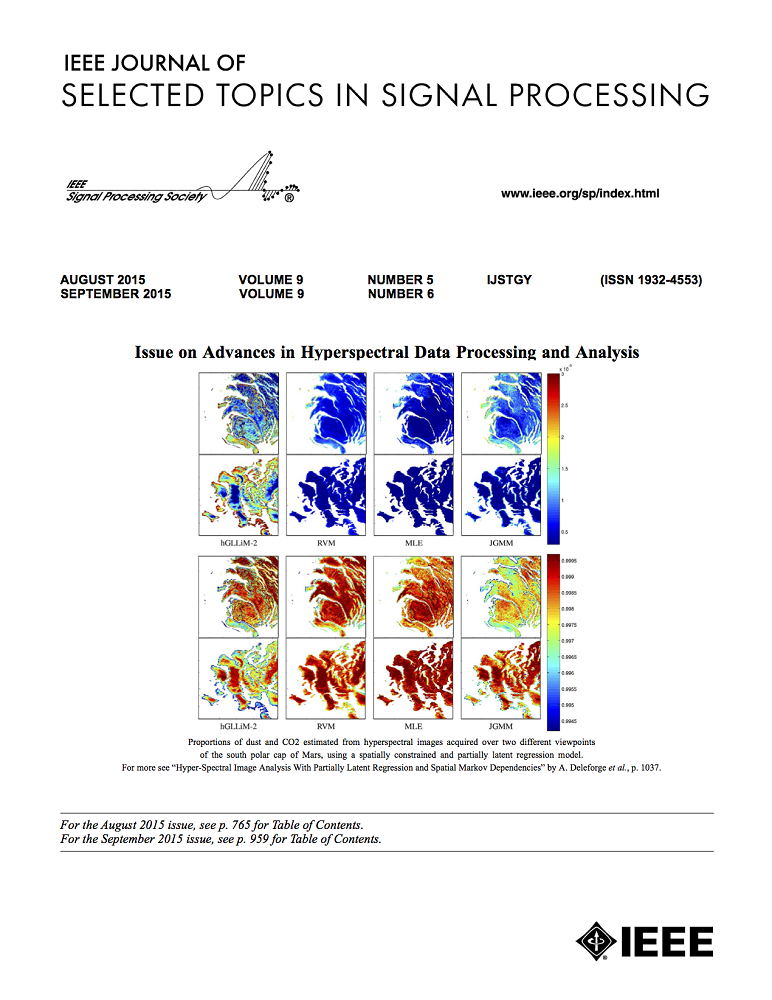Covert Wireless Communications for Augmented Reality Systems With Dual Cooperative UAVs
IF 13.7
1区 工程技术
Q1 ENGINEERING, ELECTRICAL & ELECTRONIC
IEEE Journal of Selected Topics in Signal Processing
Pub Date : 2023-07-26
DOI:10.1109/JSTSP.2023.3299116
引用次数: 0
Abstract
Unmanned aerial vehicle (UAV) aided augmented reality (AR) has developed rapidly in recent years and has become a promising technology in disaster rescue, transportation, agriculture, and environmental monitoring. However, the information leakage is challenging the usage of UAV-aided AR systems with wireless communications. In this article, a dual UAVs assisted covert communication system (CCS) is proposed, where one UAV transmits the covert message to ground receivers and a cooperative UAV performs as a jammer to interfere with the malicious eavesdropper. However, flying UAVs result in fast channel fading between the UAVs and ground nodes, which reduces the covert rate of the CCSs. To maximize the average covert rate, we formulated a non-convex optimization problem under the constraint that the detection error probability (DEP) of the monitor is minimum. Furthermore, the problem is decomposed into three subproblems and transformed into convex, and these subproblems are solved alternately by designing an iterative algorithm. Simulation results reveal that the average covert rate performance of the proposed optimization algorithm can respectively achieve 16% and 40% gains than those without covert constraint and without the cooperative UAV used as a jammer.双协同无人机增强现实系统的隐蔽无线通信
近年来,无人机(UAV)辅助增强现实(AR)技术发展迅速,在灾害救援、交通运输、农业和环境监测等领域具有广阔的应用前景。然而,信息泄露对无人机辅助AR系统无线通信的使用提出了挑战。本文提出了一种双无人机辅助隐蔽通信系统(CCS),其中一架无人机将隐蔽信息发送给地面接收器,另一架协同无人机作为干扰机干扰恶意窃听者。然而,飞行无人机导致无人机和地面节点之间的快速信道衰落,这降低了CCSs的隐蔽率。为了使平均隐蔽率最大化,在监视器的检测误差概率(DEP)最小的约束下,构造了一个非凸优化问题。在此基础上,将该问题分解为三个子问题并转化为凸问题,通过设计迭代算法交替求解。仿真结果表明,该优化算法的平均隐蔽率性能比无隐蔽约束和无协同无人机干扰的平均隐蔽率性能分别提高16%和40%。
本文章由计算机程序翻译,如有差异,请以英文原文为准。
求助全文
约1分钟内获得全文
求助全文
来源期刊

IEEE Journal of Selected Topics in Signal Processing
工程技术-工程:电子与电气
CiteScore
19.00
自引率
1.30%
发文量
135
审稿时长
3 months
期刊介绍:
The IEEE Journal of Selected Topics in Signal Processing (JSTSP) focuses on the Field of Interest of the IEEE Signal Processing Society, which encompasses the theory and application of various signal processing techniques. These techniques include filtering, coding, transmitting, estimating, detecting, analyzing, recognizing, synthesizing, recording, and reproducing signals using digital or analog devices. The term "signal" covers a wide range of data types, including audio, video, speech, image, communication, geophysical, sonar, radar, medical, musical, and others.
The journal format allows for in-depth exploration of signal processing topics, enabling the Society to cover both established and emerging areas. This includes interdisciplinary fields such as biomedical engineering and language processing, as well as areas not traditionally associated with engineering.
 求助内容:
求助内容: 应助结果提醒方式:
应助结果提醒方式:


